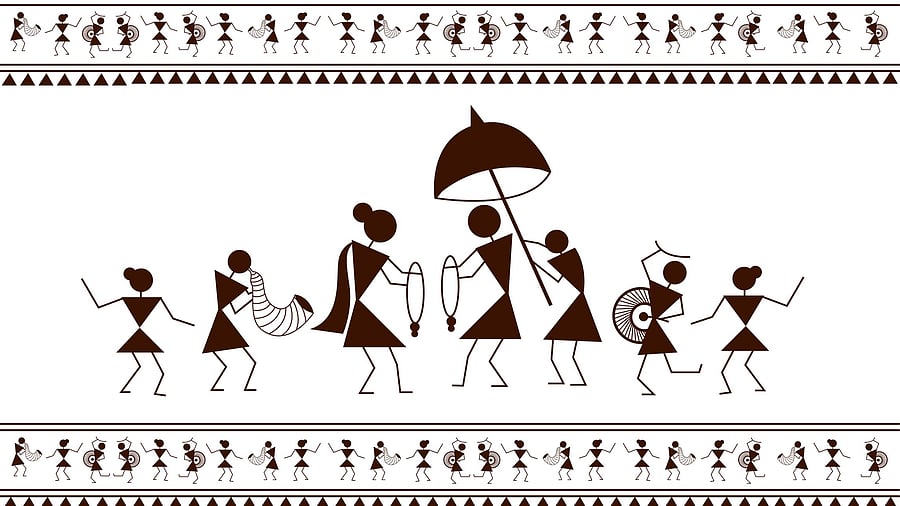
Representative image of Warli art.
Credit: iStock Photo
Mumbai: Centred around the concept of Mother Nature, the unique style of Warli art has always attracted people.
The Warlis are an indigenous tribe (adivasi) of western India, living in mountainous as well as coastal areas along the Maharashtra-Gujarat border and surrounding areas. They have their own animistic beliefs, life, customs, and traditions.
The art that adorns Warli homes helps one learn about their traditional knowledge, farming, food and how they coexist with animals.
The Bombay Natural History Society (BNHS) has teamed up with Warli artist Prakash Sathe to bring together a slow, immersive workshop on Warli Art, which will be held over two weekends in June.
The workshop would be held at the Conservation Education Center (CEC) of the BNHS inside the Film City in Mumbai.
It is popularly known as BNHS Nature Reserve.
“True to their existence the art of the Warli community has emerged from and heavily reflects on their coexistence with nature and biodiversity. And to celebrate this very coexistence, the workshop is designed to give you a flavorful, enticing experience of the hows’, whys’ and whence of the actual evolution and making of Warli painting,” said Shardul Bajikar, Education Officer, CEC, BNHS.
The Warlis are an indigenous community from the Palghar-Thane twin districts of the North Sahyadri Range in Maharashtra.
"Drawing on a store of memory, myths and everyday life, their painting has evolved from restricted ritual drawings into an applied art in a process of transition. Warli painting is an indigenous art mostly created by the tribal people from the North Sahyadri Range,” said Bajikar.
This range encompasses cities such as Dahanu, Talasari, Jawhar, Palghar, Mokhada, and Vikramgad of Palghar district.
This art originated in Maharashtra, where it is still practiced today.
The Warlis follow an oral tradition where knowledge is passed down generations through songs and tales. Their distinctive narrative paintings form an intrinsic part of this storytelling, depicting scenes that tell us about their beliefs and legends, the rhythm of daily life, the cycle of the seasons, their joys and sorrows. It is a language beyond words, communicating visually, making it an accessible tool for telling stories that can cross communities and continents.
“The Warli painting tradition in Maharashtra are among the finest examples of the folk style of paintings. The Warli community is one of the largest in India, located outside Mumbai. Till the 1970s, even though their style of art is thought to date back as early as 10th century A.D. The Warli culture is centered on the concept of Mother Nature and elements of nature are often focal points depicted in Warli painting,” he said.
Farming is the primary occupation of the tribe. They greatly respect nature and wildlife for the resources that they provide for life. Warli artists use their clay huts as a canvas for their paintings, similar to how ancient people used cave walls as their canvases.
Late Jivya Soma Mashe, a Padmashree recipient, has played a great role in making Warli paintings more popular.